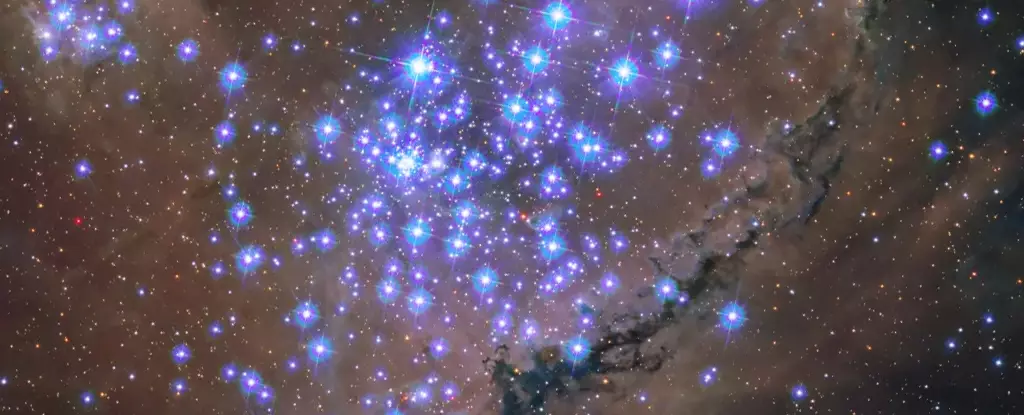Located just outside the Milky Way Galaxy, approximately 210,000 light-years from Earth, is the Small Magellanic Cloud (SMC). This dwarf galaxy, measuring about 18,900 light-years in diameter and containing around 3 billion stars, orbits the Milky Way as a satellite galaxy. Scientists are highly intrigued by the SMC and its counterpart, the Large Magellanic Cloud (LMC), as they provide valuable insights into star formation and the evolution of galaxies through mergers.
Within the Small Magellanic Cloud lies the impressive star cluster known as NGC 346, situated near the center of the brightest star-forming region in the SMC, the N66 hydrogen-rich nebula. Recently, NASA unveiled a new image of this star cluster captured by the Hubble Space Telescope, offering a breathtaking view. The intense interaction between the young, blue stars and the surrounding gas and dust makes NGC 346 one of the most intricate and dynamic star-forming clusters ever observed.
The Hubble Space Telescope’s sharp resolution and unique ability to conduct sensitive ultraviolet observations played a significant role in obtaining these captivating images. By combining ultraviolet and visible light data from Hubble’s Advanced Camera for Surveys (ACS) and Wide Field Camera 3 (WFC3), scientists were able to gain a deeper understanding of star formation processes within low-metallicity galaxies like the SMC. These conditions are believed to resemble those of the early Universe, characterized by a scarcity of heavy elements.
Studying star formation in galaxies like the SMC provides valuable insights into how the interstellar medium (ISM) evolves under low-metallicity conditions. This research helps scientists understand the origins of heavy elements in the Universe, which began to form with the emergence of the first generation of stars and galaxies approximately 100 million to one billion years after the Big Bang. As these stars reached the end of their lifespan and underwent supernova events, heavier elements were dispersed throughout space, enriching the interstellar medium.
After more than three decades of operation, the Hubble Space Telescope continues to be an indispensable tool for scientists investigating the origins and evolution of the Universe. The stunning images captured of star clusters like NGC 346 within the Small Magellanic Cloud provide a glimpse into the complex processes of star formation and galaxy evolution. By studying these phenomena in detail, researchers can piece together the puzzle of how the Universe has developed over billions of years.


Leave a Reply